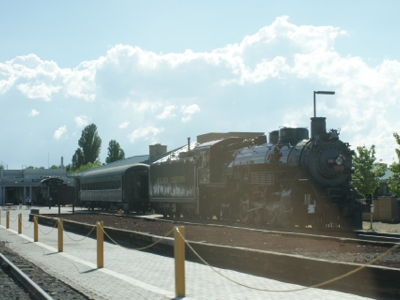If you drive through the desert across Northern Arizona, Nevada and California you might wonder why some places, such as Williams, Seligman, Kingman, Needles and Barstow came to be. After all, there’s literally nothing around them and they aren’t exactly the most hospitable places to live. A lot of places out in the desert were founded as mining towns. One example of a mining town is Oatman, Arizona. Here’s the Olive Oatman Restaurant & Saloon:
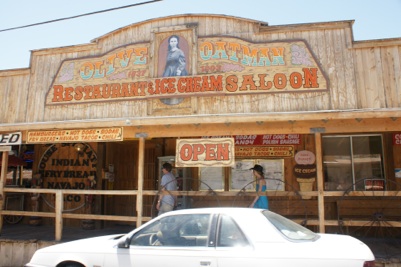
Olive Oatman, by the way, was an Illinois woman who in 1851 was abducted at age 13 by Native Americans (“Red Indians” for those of you whose American history was taught by John Wayne) and forced into slavery. Six years later she was traded by the Native Americans for horses and blankets and Oatman the town stands near where she was released.
Today Oatman is a tourist town which has a population of burros (wild donkeys) that roam the streets. Other than the modern tourist cars it doesn’t look much different to how it must have been 150 years ago:
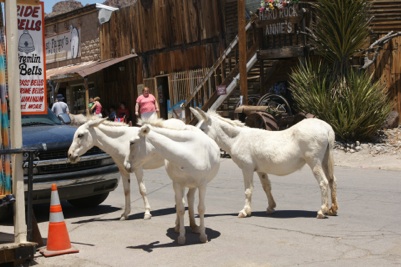
But that’s an old mining town. Back to those other places. Having just read Lesley Poling-Kempes’ excellent book “The Harvey Girls: Women Who Opened The West” it would appear that places like Williams, Seligman, Kingman, Needles and Barstow all date back to the old Santa Fe Railway and were regular stops for travelers back in the heyday of rail transport.
The history of the Santa Fe Railway is a story in itself but, in a nutshell, Cyrus K Holliday and his successors in the Atchison, Topeka and Santa Fe Railway built, from the 1860s to the 1890s, a rail network from Chicago to Los Angeles, San Diego and San Francisco, with routes down to Houston and up to Denver.
And this is where our towns come into the story. The establishment of a station, depot or junction point in the railway was followed by the establishment of a town for the people servicing the Santa Fe.
In the early days of rail travel the long journey was punctuated by short stops (20 minutes) at these towns for food which would make the old British Rail food seem respectable: “ ...eggs were shipped from back East, preserved in Lime...” and “chicken stew of prairie dogs was not uncommon” (presumably the origin of the phrase “tastes like chicken”?).
Scams were established where food was ordered at the station and just before it arrived passengers (who had already paid) would be called back on the train. The food would be served to another customer later and the profits shared between the station and train staff.
This all changed in 1878 when an Englishman came along (of course). Fred Harvey from London opened a dining room at the Florence, Kansas, Santa Fe stop. This quickly grew into an entire network of restaurants and hotels, known as Harvey Houses, all across the Santa Fe network.
Fred Harvey revolutionized restaurant and hotel services on the railroad with high standards and competitive prices. Here’s a menu from the Alvarado Harvey House in Albuquerque, New Mexico dating back to 1929:
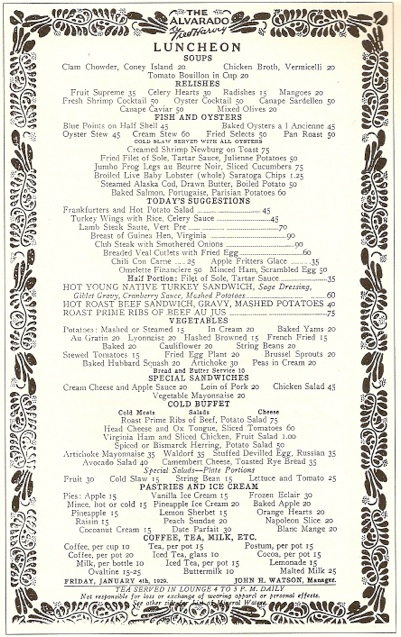
Just to clarify, the amounts are in cents, not dollars!
Fred Harvey recruited young women from the East to work in the Harvey Houses. These women lived in the Harvey House they worked in, were made to live by strict curfews and were not allowed to marry for the first 6-12 months of their contract. The Harvey Girls, as they became known, are credited with taming the wild west. Before the Harvey Girls, the quote “No ladies west of Dodge City and no women west of Albuquerque” was very true - the only women worked in the oldest profession in the world and, in rare cases, as school teachers.
The Harvey House system started to decline during the depression and then made a brief comeback providing food for soldiers during the Second World War. In 1944 a film called “The Harvey Girls” was made (starring Judy Garland).
The growth of the car travel hit the Santa Fe badly and by 1950 almost all the locations were closed. A few remained open and indeed are still open today. Here is El Tovar at the Grand Canyon:
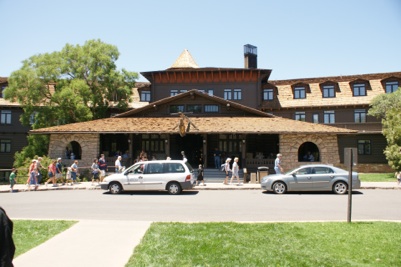
A company called Xanterra now owns the Harvey name and runs places like El Tovar (as well as facilities at most of the US national parks).
Back now to Houston: The Houston Harvey House was opened in Union Station in 1911. It closed in 1948. This is how the dining room looked back then:
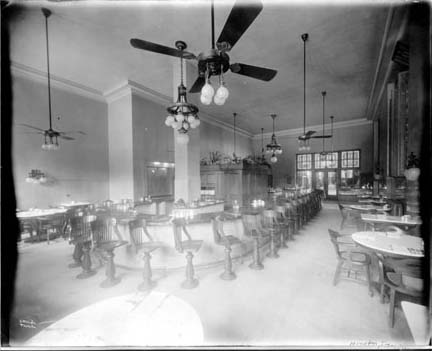
And here’s a menu from that very dining room in 1936:
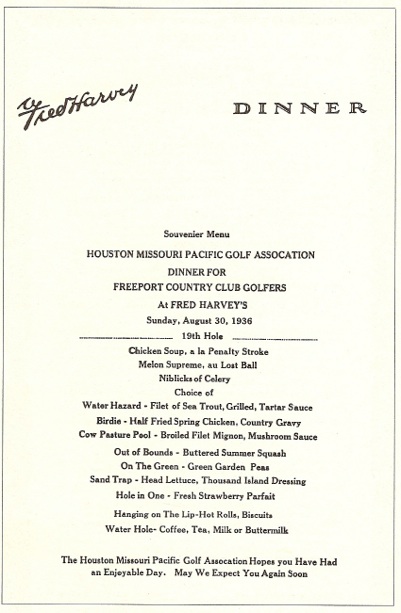
Here’s how Union Station looked from the outside:
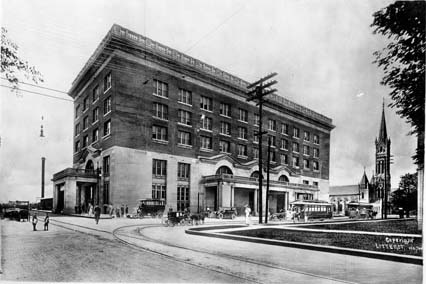
Today Union Station is no longer a train station, although from the outside it doesn’t look much different:
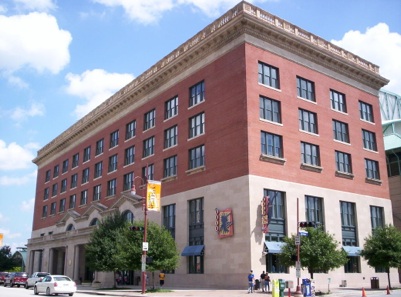
In fact it is now part of Minute Maid Park, home of the Houston Astros Major League Baseball team since 2000. As a reminder of its past, the stadium has a train that goes backwards and forwards during the game:
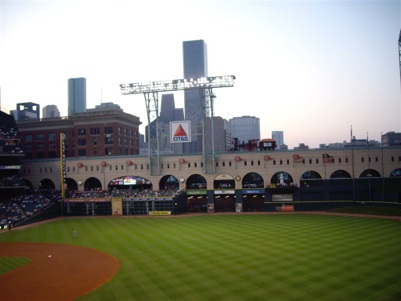
I wonder what Fred Harvey would make of the food, the service and the cost at one of his old Harvey Houses....

